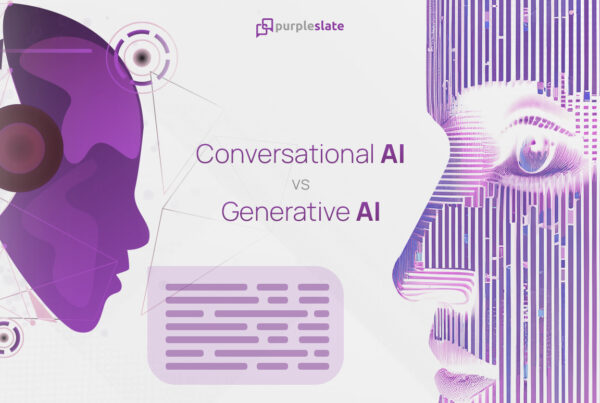
Introduction
It is no doubt that the insurance industry, insurance claim process in particular deals with hefty paperwork, claim settlements, adjudications, complex legal processes, and so much more, and yet it is deemed to be one of the least technologically advanced industries in the world.
Though Artificial Intelligence is yet to penetrate the insurance sector, a study by Accenture shows that substantial investments in AI, especially conversational AI, could increase the annual profitability of the sector by 20%.
There is a significant rise already in the number of insurance companies that are adopting conversational AI since the benefits are numerous. Apart from supporting customer experience and marketing, conversational AI can also help insurers in speeding up the insurance claim process by detecting fraudulent claims.
Where there’s an insurance company, there are fraudsters looking to cheat and make money from false claims so much so that a recent study estimates that at least $308.6 billion is stolen through insurance fraud every year. Conversational AI can be effective at addressing such malpractices during the claim processing cycles.
Conversational AI for Claims Processing
Insurance claim process refers to an insurance company’s procedure to check the claims for adequate information, validation, and authenticity. Insurers usually follow a four-step process to make claim settlement decisions. There is a huge scope for insurers to harness conversational AI for claims processing in the following steps.
- First Notice of Loss – The victim contacts the insurance company or their broker. Meticulous details such as the date and time of the accident, damage/loss faced, and supporting evidence such as photos or videos are recorded.
- Insurance Claim Investigation – After the claim has been reported, an adjuster is assigned. Adjusters handle many areas such as studying medical reports, investigating accident scenes, assessing damages, and help determine the amount of loss covered by the insurance policy. In order to accurately evaluate the extent of the damages/loss, the adjuster can hire appraisers, doctors, or contractors for their advice.
- Policy Review – Once the investigation is complete, the adjuster reviews the policy to determine what is and is not covered under the victim’s policy, and look for applicable deductibles in the case.
- Insurance Claims Settlement – When the adjudication process is complete, armed with data from the investigation stages, payment is done by the insurance company. In the case of health insurance, the insurance company sends a notification to the hospital, along with justifications for settling or rejecting the claim called Explanation of Benefits. Depending on the complexity of the situation, the amount of time taken to process the payment also varies.
How Conversational AI can help the Insurance claim process?
By harnessing AI-powered conversational assistants in processing claims, insurers can speed up the insurance claim process and also significantly reduce fraudulent claims. Conversational AI can help insurance companies through all four steps of claims processing from the First Notice of Loss (FNOL) to claims settlement. During the FNOL stage, victims can submit the necessary documents or other proofs like photographs right away from wherever they are at any given time without human assistance. During this stage, a large number of uncategorized documents are exchanged. Conversational AI for claims processing can efficiently accumulate these documents from different sources, and categorize and feed the data into appropriate systems in no time.
In the stage of the investigation, with the help of machine learning, conversational AI compares the key incident information with the trained conditions pertaining to the cause of loss, legal regulations, damage type, and much more. In this regard, multiple data are processed in short periods of time and all insurance claims are scrutinized for fraud. With the help of Natural Language Processing, conversational AI can extract texts from the submitted documents and detect fraud which traditionally requires a large number of people and several man-hours. Conversational AI can probe where connections might exist between various points that may be imperceptible to the human eyes. This continuous revision of fraud patterns also allows the discovery of new fraudulent schemes.
Conversational AI for claims processing can be effective during the claims estimation process by organizing critical information such as cost estimations, legal expenses, adjuster costs, and much more, and help the handlers to make smarter decisions that are free of errors. While the claims are processed, customers can find out the stage their claim has reached through simple conversational queries with the AI assistant. Apart from this, they can also notify the customers about any additional requirements of information or documents or other deficiencies, eventually speeding up claim cycles.
Conclusion
One of the biggest challenges of the insurance industry is that it faces over $40 billion in fraud per year which not only financially strains insurers but also results in higher overall insurance costs. Though conversational AI help in detecting fraudulent claims and speeding up claim processes, adopting these capabilities does not mean humans have no place in claims processing. Based on historical data, conversational assistants can identify and process straightforward claims and route complex claims requiring human interventions to appropriate agents allowing productivity gains for the insurer. With enough traction already in improving customer experience in the insurance sector, conversational AI today is making fast inroads into fraud-free claims processing as well and insurance companies must take advantage of conversational AI technology to stay ahead of the innovation curve.




